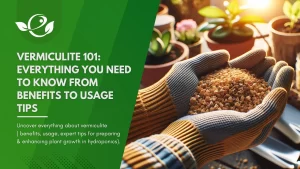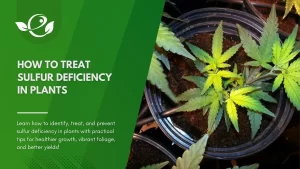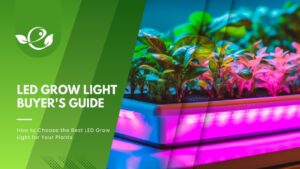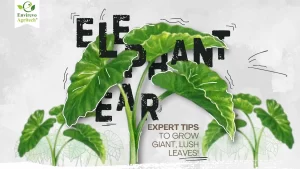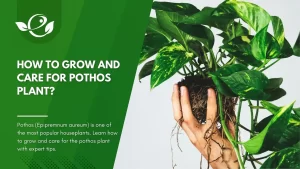Table of Contents
Hydroponic is a method of growing plants without soil, using nutrient-rich water solutions. This innovative approach to gardening has gained popularity in recent years due to its efficiency and ability to produce high yields in limited space. In this article, we’ll explore what hydroponics is, how it works, its advantages and disadvantages, essential components of hydroponic farming, suitable plants for hydroponic farming, steps to start a hydroponic garden, common issues, and more.
What is Hydroponics?
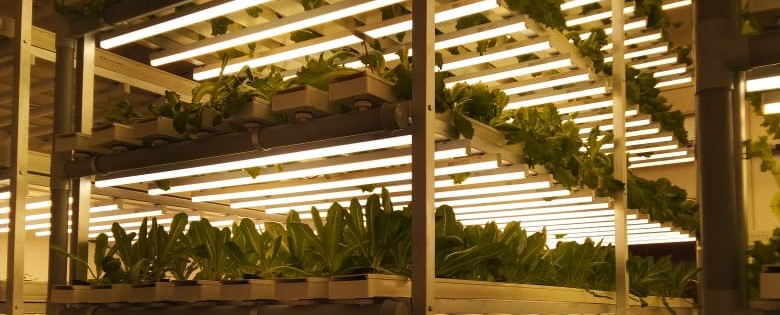
Hydroponic is a soilless method of growing plants, using a nutrient-rich water solution. Unlike traditional soil-based gardening, where plants obtain nutrients from the soil, hydroponic systems deliver nutrients directly to the plant roots. This allows for more efficient nutrient absorption and faster growth rates.
A. Comparison with Traditional Soil-based Gardening
In traditional gardening, plants rely on soil to provide essential nutrients, water, and support. However, in hydroponic farming, plants are grown in an inert growing medium, such as perlite, vermiculite, or coconut coir, and receive nutrients directly from the water solution.
B. Basic Principles of Hydroponic Farming
The basic principle of hydroponic farming is to provide plants with everything they need to grow, without the use of soil. This includes water, nutrients, oxygen, and light. By controlling these factors, hydroponic gardeners can optimize plant growth and maximize yields.
How Does Hydroponics Work?
Hydroponic systems work by delivering a nutrient-rich water solution directly to the plant roots. There are several different types of hydroponic systems, each with its own unique advantages and disadvantages.
A. Overview of Hydroponic Systems
- Deep Water Culture (DWC): In a DWC system, plants are suspended in a nutrient solution with their roots submerged in the water. An air pump is used to provide oxygen to the roots.
- Nutrient Film Technique (NFT): NFT systems use a shallow stream of nutrient solution to deliver water and nutrients to the plant roots.
- Ebb and Flow (Flood and Drain): Ebb and Flow systems periodically flood the plant roots with nutrient solution and then allow the water to drain away.
B. Components of a Hydroponic System
- Reservoir: Holds the nutrient solution.
- Pump: Circulates the nutrient solution.
- Grow Tray: Holds the plants and growing medium.
- pH and EC Meter: Monitors the pH and electrical conductivity of the nutrient solution.
Advantages of Hydroponic Farming

Hydroponic Farming offers several advantages over traditional soil-based gardening.
A. Increased Growth Rates and Yields
Because plants have easy access to water and nutrients in a hydroponic system, they can grow faster and produce higher yields compared to traditional gardening methods.
B. Water Efficiency
Hydroponic systems use water much more efficiently than traditional gardening methods, making them ideal for areas with limited water resources.
C. Control Over Nutrient Levels
Hydroponic gardeners have complete control over the nutrient levels in their growing environment, allowing them to optimize plant growth and maximize yields.
D. Suitable for Urban and Indoor Gardening
Hydroponic systems can be set up virtually anywhere, making them ideal for urban and indoor gardening.
Disadvantages of Hydroponic Farming
While hydroponic gardening offers many advantages, there are also some disadvantages to consider.
A. Initial Setup Costs
Setting up a hydroponic system can be expensive, especially when compared to traditional gardening methods.
B. Potential for System Failures
Hydroponic systems rely on pumps, timers, and other mechanical components, which can fail and disrupt the growing environment.
C. Dependency on Electricity
Most hydroponic systems require electricity to operate, which can be a significant drawback in areas with unreliable power sources.
Essential Components of a Hydroponic System
To set up a hydroponic garden, you’ll need a few essential components.
A. Growing Medium Options
- Rockwool: Made from volcanic rock, rockwool is a popular growing medium for hydroponic systems.
- Perlite: Perlite is a lightweight, volcanic rock that is often used as a growing medium in hydroponic systems.
- Coconut Coir: Coconut coir is a natural, renewable growing medium made from coconut husks.
B. Nutrient Solutions and Their Importance
Nutrient solutions provide plants with the essential elements they need to grow, including nitrogen, phosphorus, potassium, and micronutrients.
C. pH and EC Levels in Hydroponics
Maintaining the correct pH and electrical conductivity (EC) levels is essential for healthy plant growth in hydroponic systems.
Suitable Plants for Hydroponic Gardening
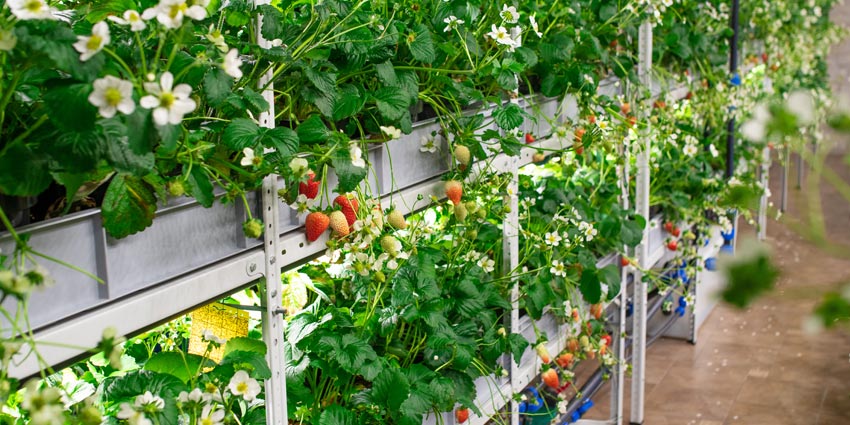
Many different types of plants can be grown using hydroponic techniques.
A. Leafy Greens
- Lettuce
- Spinach
- Kale
B. Herbs
- Basil
- Cilantro
- Parsley
C. Fruiting Plants
- Tomatoes
- Peppers
- Cucumbers
Steps to Start a Hydroponic Garden
Starting a hydroponic garden is easier than you might think.
A. Choosing a Suitable Location
Select a location with access to water and electricity, and adequate space for your hydroponic system.
B. Setting Up the Hydroponic System
Follow the manufacturer’s instructions to set up your hydroponic system and prepare your growing medium.
C. Planting and Maintaining the Garden
Plant your chosen crops in the growing medium, and monitor the nutrient levels, pH, and EC of the nutrient solution regularly.
Common Issues in Hydroponic Farming
Despite its many benefits, hydroponic can be challenging at times.
A. Nutrient Deficiencies
Monitor your plants regularly for signs of nutrient deficiencies, such as yellowing leaves or stunted growth.
B. pH Imbalance
Maintaining the correct pH level is essential for healthy plant growth in hydroponic systems.
C. Pests and Diseases
Keep an eye out for common pests and diseases that can affect hydroponic plants, such as aphids, whiteflies, and powdery mildew.
Conclusion
Hydroponics offers an efficient and sustainable way to grow plants without the use of soil. By providing plants with everything they need to grow, including water, nutrients, and light, hydroponic gardeners can optimize plant growth and maximize yields. While hydroponic farming does have some disadvantages, such as initial setup costs and the potential for system failures, the benefits far outweigh the drawbacks. With the right setup and maintenance, hydroponic farming can be a rewarding and enjoyable way to grow your own fruits, vegetables, and herbs at home.
FAQs (Frequently Asked Questions)
1. What is the difference between hydroponic farming and traditional gardening?
In traditional gardening, plants rely on soil to provide essential nutrients, water, and support. In hydroponic farming, plants are grown in an inert growing medium, such as perlite or coconut coir, and receive nutrients directly from a nutrient-rich water solution. This allows for more efficient nutrient absorption and faster growth rates.
2. What are the advantages of hydroponic farming?
Hydroponic farming offers several advantages over traditional soil-based gardening, including:
1. Increased growth rates and yields
2. Water efficiency
3. Control over nutrient levels
4. Suitable for urban and indoor gardening
3. What are the disadvantages of hydroponic farming?
While hydroponic farming offers many benefits, there are also some disadvantages to consider, including:
1. Initial setup costs
2. Potential for system failures
3. Dependency on electricity
4. What plants can be grown using hydroponic farming?
Many different types of plants can be grown using hydroponic farming techniques, including:
1. Leafy greens (lettuce, spinach, kale)
2. Herbs (basil, cilantro, parsley)
3. Fruiting plants (tomatoes, peppers, cucumbers)
5. How do I start a hydroponic garden?
Starting a hydroponic garden is easier than you might think. Here are the basic steps:
1. Choose a suitable location with access to water and electricity.
2. Set up your hydroponic system according to the manufacturer’s instructions.
3. Plant your chosen crops in the growing medium.
4. Monitor the nutrient levels, pH, and electrical conductivity (EC) of the nutrient solution regularly.
6. What are some common issues in hydroponic farming?
Some common issues in hydroponic farming include:
1. Nutrient deficiencies
2. pH imbalance
3. Pests and diseases
7. Is hydroponic farming sustainable?
Yes, hydroponic farming is a sustainable and efficient way to grow plants. Because hydroponic systems use water much more efficiently than traditional gardening methods, they are ideal for areas with limited water resources. Additionally, hydroponic systems can be set up virtually anywhere, making them suitable for urban and indoor gardening.
8. How much does it cost to start a hydroponic garden?
The cost of starting a hydroponic garden can vary depending on the size and complexity of the system you choose. While there are some initial setup costs, such as purchasing a hydroponic system and growing medium, many hydroponic gardeners find that the long-term benefits outweigh the initial investment.
9. Can I use organic nutrients in a hydroponic system?
Yes, many hydroponic gardeners choose to use organic nutrients in their systems. However, it’s essential to make sure that the nutrients you use are water-soluble and suitable for use in hydroponic systems.
10. How often do I need to change the nutrient solution in my hydroponic system?
The frequency of nutrient solution changes will depend on several factors, including the size of your system, the type of plants you’re growing, and the environmental conditions. In general, it’s a good idea to change the nutrient solution every one to two weeks to ensure that your plants have access to fresh, balanced nutrients.


